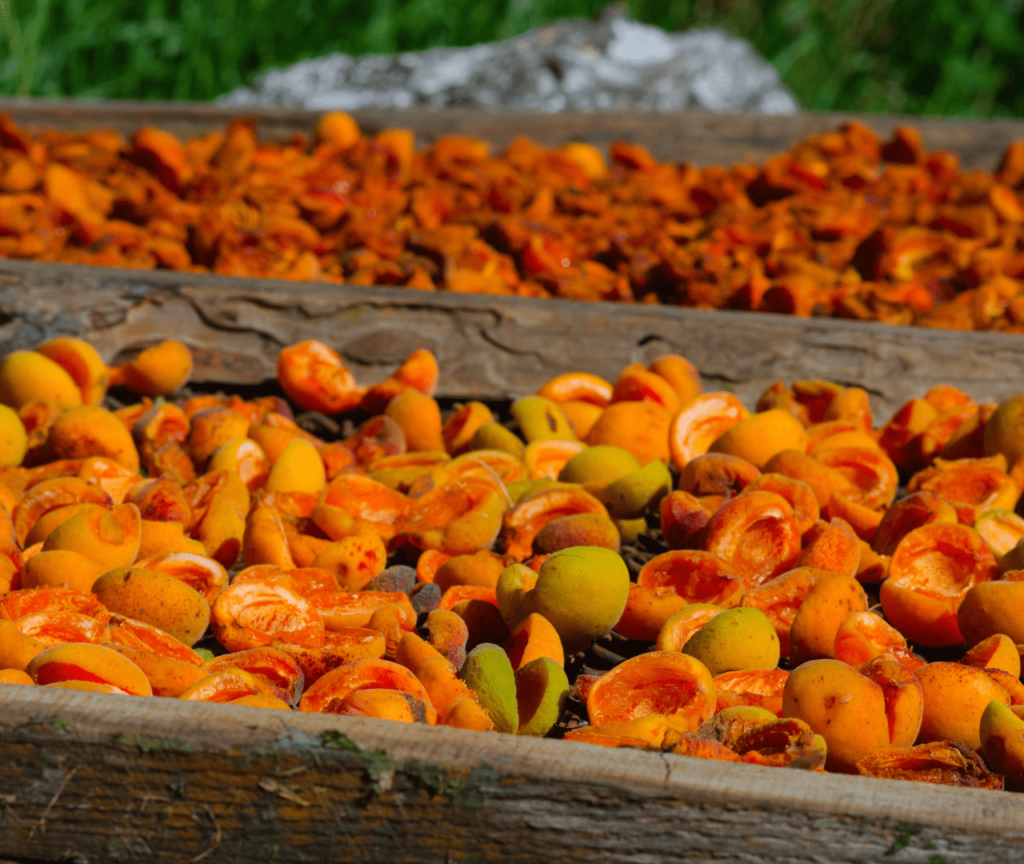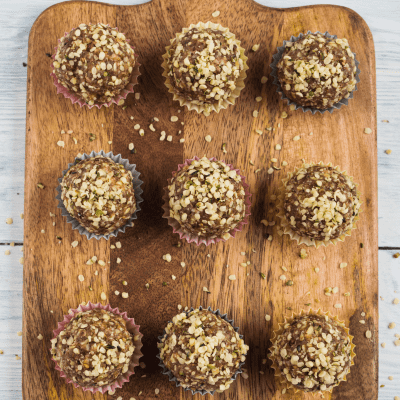
Dry Apricots in urdu Kushk Khubani: Your Key to Exciting Pakistani Cuisine + 5 Recipes
Dry apricots in Urdu, known as “kushk khubani,” are versatile and flavorful ingredients widely used in Pakistani cuisine. From traditional sweet dishes to savory delicacies and refreshing beverages, dry apricots add a unique tangy and sweet taste to various recipes. This article will explore the history, nutritional benefits, culinary uses, regional variations, storage tips, and more about dry apricots in Pakistani cuisine.
Dry Apricot in Urdu: kushk Khubani کشک خوبانی

Dry apricot is known as “kushk khubani” in Urdu, the national language of Pakistan. This fruit holds a special place in traditional cuisine in many regions of South Asia, including Pakistan, India, and Bangladesh. It is highly regarded for its distinct flavor and nutritional properties.
History of Kushk Khubani Dry Apricots in Urdu Pakistani Cuisine
Dry apricots have been a part of Pakistani cuisine for centuries. Their origins can be traced back to Central Asia, where they were first cultivated. Over time, Kushk khubani made their way to the Indian subcontinent and became an integral ingredient in various regional cuisines, including Pakistani cuisine. The distinct sweet and tangy flavor of dry apricots became highly appreciated and incorporated into numerous traditional recipes.
Culinary Uses of Kushk Khubani in Pakistani Cuisine
Dry apricots are a versatile ingredient in traditional Pakistani cuisine, featuring prominently in sweet and savory dishes. From the delightful “khubani ka meetha” dessert to enhancing biryanis and curries, these dried fruits add a unique balance of flavors. Additionally, their infusion into “khubani ka sharbat” offers a refreshing and revitalizing beverage, perfect for beating the summer heat.
Traditional Sweet Dishes
Dried apricots are a popular ingredient in traditional Pakistani sweet dishes. One classic example is “khubani ka meetha,” a dessert made with stewed dried apricots and sugar garnished with slivered almonds and fresh cream. The natural sweetness and tanginess of the apricots create a delightful balance of flavors in this delectable dessert.
Savory Dishes
In addition to sweet dishes, dry apricots are used in savory Pakistani recipes. They add a unique and complex flavor profile to dishes like biryanis, pulaos, and curries. The tartness of the apricots complements the savory spices, creating a harmonious blend of tastes. Whether added whole, sliced, or ground into a paste, dry apricots enhance these dishes’ overall depth and richness.
Beverages of Dried Apricots in Urdu
Dry apricots are often infused into refreshing beverages, especially during the hot summer. A popular drink is “khurmani ka sharbat,” a sweet apricot syrup mixed with chilled water and served with ice cubes. This revitalizing beverage offers a cooling effect and a burst of natural fruit flavors.
Incorporating Dry Apricots in Pakistani Cuisine Exciting Ways to Use Dry Apricots
There are countless ways to use dry apricots in Pakistani cooking. Here are five exciting ideas to get you started:
| In Biryanis and Pulao: Add a handful of soaked dry apricots to your biryanis or pulao for a sweetness that complements the savoury flavours. |
| In Chutneys and Sauces: Create a tangy and sweet chutney by blending dry apricots with tamarind, jaggery, and spices. It pairs wonderfully with kebabs and samosas. |
| In Meat and Chicken Curries: Enhance the richness of meat and chicken curries by simmering dry apricots in the sauce. The sweetness balances the spices, creating a delightful taste. |
| In Sweet Rice Dishes: Prepare a delightful sweet dish by mixing cooked rice, sugar, ghee, and dry apricots. Top it with nuts for added texture. |
| In Desserts: From traditional halwa to modern cakes, dry apricots can add a unique twist to your favorite desserts. |
Kushk Khubani Chutney Recipe
Now, Let’s get hands-on with a delectable Kushk Khubani Chutney recipe:
Ingredients:
- 1 cup soaked dry apricots
- 1/2 cup tamarind pulp
- 1/4 cup jaggery
- 1 tsp cumin seeds
- 1 tsp red chilli powder
- 1/2 tsp salt Water
- Chopped fresh coriander leaves
Instructions:
Combine soaked dry apricots, tamarind pulp, and jaggery in a blender. Add cumin seeds, red chilli powder, and salt. Blend the mixture, adding water as needed to achieve the desired consistency. Transfer the chutney to a serving bowl and garnish with chopped coriander leaves. Serve with your favourite snacks and enjoy the burst of flavours.
Kushk Khubani Pulao Recipe
Next, let’s explore a delightful Kushk Khubani Pulao recipe:
Ingredients:
- 1 cup basmati rice (soaked for 30 minutes)
- 1/2 cup soaked dry apricots
- 1/4 cup fried onions
- 1/4 cup mixed nuts (cashews, almonds, and pistachios)
- 2 cups vegetable or chicken broth
- 2 tbsp ghee
- 1 cinnamon stick
- 2-3 green cardamom pods
- 1 bay leaf
- Salt to taste
Instructions:
Bring the milk to a boil in a pot, and then add the soaked rice. Cook on low heat until the rice is tender and the milk is mostly absorbed. In a separate pan, heat ghee and roast the mixed nuts and raisins until they turn golden. Set them aside. Add the soaked dry apricots in the same pan and sauté them for a few minutes. Once the rice is cooked, add sugar, saffron-soaked milk, and cardamom powder. Mix well and cook for a few more minutes until the sugar dissolves completely. Gently fold the sautéed dry apricots, roasted nuts, and raisins into the sweet rice mixture. Cover the pot and let it simmer on low heat for a few more minutes, allowing the flavors to meld together. Serve the Sweet Rice with Dry Apricots and Nuts warm, and enjoy this delightful dessert with your loved ones.
Regional Variations in Using Dry Apricots
Different regions of Pakistan have unique ways of incorporating dried apricots into their cuisine. In some areas, apricots are stuffed with nuts and cooked in rich gravies; in others, they are used to make tangy chutneys. The versatility of dried apricots allows for creativity and experimentation, resulting in diverse culinary experiences across the country.
Culinary Uses of Dry Apricots in Urdu
Dry apricots add a delightful touch to various sweet and savory dishes in Urdu cuisine. Let’s explore some popular culinary uses:
- Khubani Ka Meetha: A classic Hyderabadi dessert, Khubani ka meetha is a delectable apricot compote served with creamy custard or ice cream.
- Apricot Chutney: Urdu cuisine features apricot chutney, a tangy and spicy condiment that pairs perfectly with biryanis and kebabs.
- Stuffed Apricots: Stuffed with a mixture of nuts and spices, dried apricots are an excellent appetizer or dessert option for festive occasions.
- Apricot Smoothie: Blend dried apricots with yogurt and honey to create a refreshing and nutritious apricot smoothie.
- Apricot Pilaf: Incorporate dry apricots into a fragrant rice pilaf for a burst of flavor and a delightful sweetness.
Buy Whole Sale Prices Masala For Your Culinary at Online Store Mirchoo Spices Market
The Origins of Kushk Khubani
Apricots have a long and illustrious history, dating back thousands of years. Their origins can be traced to ancient China, where they were cultivated over 3,000 years ago. From there, apricots traveled along the legendary Silk Road, reaching the Middle East and Europe. Today, apricots are grown in various parts of the world, with countries like Turkey, Iran, and Italy being major producers.
Ancient Roots and Global Spread
In ancient times, apricots were cherished for their delightful taste and believed to possess mystical properties. As trade routes expanded, apricot trees found their way to different regions, including Persia (modern-day Iran) and the Mediterranean. The Moors introduced apricots to Spain during their rule, leading to their further spread across Europe.
Dried Apricot Varieties and Cultivation
Over the centuries, several apricot varieties have emerged, each with its unique characteristics. The most common varieties include “Moorpark,” “Blenheim,” and “Harglow.” Apricot trees thrive in temperate climates, requiring well-drained soil and plenty of sunlight for optimal growth.
Popular Apricot Varieties Around the World
Different regions boast unique apricot varieties, each offering distinct characteristics.
| Turkish Apricots: A Sweet Delight: | Turkish apricots are famous for their sweetness and succulent texture, making them a favorite among apricot lovers. |
| Moroccan Apricots: | A Taste of Exoticism: Moroccan apricots have a distinctive flavor profile, and their exotic appeal makes them stand out in culinary creations. |
| California Apricots: Sun-Kissed Goodness: | California is known for producing apricots with a sun-kissed sweetness, ideal for enjoying fresh or dried. |
Delicious Dry Apricot in urdu Recipes
These vibrant, chewy fruits are not only delicious but also packed with essential vitamins and minerals. From sweet treats to savory delights, we have compiled a variety of recipes that are sure to tantalize your taste buds and add a burst of flavor to your meals. So, let’s embark on this culinary journey and discover the wonderful world of delicious dry apricot recipes.
Apricot Energy Bites
Ingredients:
- 1 cup dry apricots, soaked and drained
- 1 cup rolled oats
- 1/2 cup shredded coconut
- 1/2 cup almond butter
- 1/4 cup honey
- 1 teaspoon vanilla extract
- Pinch of salt

Instructions:
- In a food processor, combine the soaked apricots, rolled oats, shredded coconut, almond butter, honey, vanilla extract, and a pinch of salt.
- Pulse the mixture until it forms a sticky dough-like consistency.
- Roll the mixture into bite-sized balls and place them on a parchment-lined tray.
- Refrigerate the energy bites for at least 30 minutes before serving.
- These apricot energy bites make for a delightful and healthy snack, perfect for boosting your energy throughout the day.
Tangy Apricot Glazed Chicken
Ingredients:
- 4 boneless, skinless chicken breasts
- 1 cup dried apricots
- 1/2 cup orange juice
- 2 tablespoons Dijon mustard
- 2 tablespoons honey
- 1 tablespoon olive oil
- 1 teaspoon thyme
- Salt and pepper to taste
Instructions:
In a blender, combine the dried apricots and orange juice, and blend until you get a smooth puree.
Season the chicken breasts with salt, pepper, and thyme.
In a large skillet, heat olive oil over medium heat and sear the chicken breasts until golden brown on both sides.
Pour the apricot puree over the chicken and cook for an additional 8-10 minutes, or until the chicken is fully cooked and the glaze has thickened.
Serve the tangy apricot glazed chicken with your favorite side dishes.
This savory apricot-glazed chicken is a delightful twist on a classic dinner recipe, and its tangy flavor will leave your taste buds wanting more.

Apricot Almond Overnight Oats
Ingredients:
- 1 cup rolled oats
- 1 cup almond milk
- 1/4 cup Greek yogurt
- 1/4 cup chopped dry apricots
- 2 tablespoons honey
- 1 tablespoon almond butter
- 1 teaspoon chia seeds

Instructions:
In a mason jar or airtight container, combine the rolled oats, almond milk, Greek yogurt, chopped dry apricots, honey, almond butter, and chia seeds.
Stir the mixture well, ensuring all ingredients are thoroughly combined.
Seal the container and refrigerate it overnight.
In the morning, give the mixture a good stir and enjoy your creamy and nutritious apricot almond overnight oats.
This quick and easy breakfast option is perfect for busy mornings, providing you with a healthy and filling start to the day.
Apricot Glazed Pork Tenderloin
Ingredients:
- 1 pork tenderloin
- 1/2 cup apricot preserves
- 2 tablespoons soy sauce
- 2 cloves garlic, minced
- 1 teaspoon ginger, grated
- Salt and pepper to taste
Instructions:
Preheat your oven to 375°F (190°C).
Season the pork tenderloin with salt and pepper and place it in a baking dish.
In a small bowl, mix together the apricot preserves, soy sauce, minced garlic, and grated ginger.
Pour the glaze over the pork tenderloin, ensuring it’s evenly coated.
Roast the pork in the preheated oven for about 25-30 minutes or until the internal temperature reaches 145°F (63°C).
Allow the meat to rest for a few minutes before slicing and serving with your favorite sides.
This succulent apricot-glazed pork tenderloin is a wonderful main course that’s perfect for special occasions or family dinners.

Apricot and Goat Cheese Crostini
Ingredients:
- Baguette, sliced and toasted
- 1 cup fresh goat cheese
- 1/2 cup chopped dried apricots
- 1/4 cup honey
- Fresh thyme leaves for garnish

Instructions:
Spread a generous amount of goat cheese on each toasted baguette slice.
Top the goat cheese with chopped dried apricots.
Drizzle honey over the crostini and garnish with fresh thyme leaves.
These delightful apricot and goat cheese crostini are the perfect appetizers for any gathering, offering a delightful balance of sweet and savory flavors.
Frequently Asked Questions (FAQs)
What are dry apricots called in Urdu?
In Urdu, dry apricots are known as “kushk khubani.”
How are dry apricots used in Pakistani cuisine?
Dry apricots are widely used in Pakistani cuisine to add a unique tangy and sweet taste to both sweet and savory dishes. They are used in traditional sweet dishes like “khubani ka meetha” and savory dishes like biryanis, pulao, and curries. Dry apricots are also infused into refreshing beverages like “khurmani ka sharbat.”
What are the nutritional benefits of dry apricots?
Dry apricots are a good source of dietary fiber, potassium, vitamin A, and antioxidants. They promote digestive health, support heart health, and contribute to overall well-being.
How should I store dry apricots to keep them fresh?
Store dry apricots in an airtight container in a cool, dry place away from direct sunlight to keep dry apricots fresh. They can also be stored in the refrigerator for extended shelf life.
Can I use dry apricots other than “khubani ka meetha” in desserts?
Dry apricots can be used in various desserts, including halwa, cakes, and energy bites. They add a unique twist to traditional desserts and enhance their flavor profile.
Conclusion
In conclusion, dry apricots in Urdu, known as “kushk khubani,” play a significant role in Pakistani cuisine, adding a unique tangy and sweet taste to various dishes. They are used in traditional sweet treats like “khubani ka meetha” and savory delights like biryanis and curries, offering a delightful balance of flavors. Also, they are used in refreshing beverages like “khurmani ka sharbat” to beat the summer heat. With their versatile culinary uses and rich history, dry apricots are a cherished ingredient in Pakistani cooking, providing flavor and nutritional benefits to the region’s delightful cuisine.
People Also Asked
How do I prepare Kushk Khubani Chutney?
To make Kushk Khubani Chutney, blend soaked dry apricots, tamarind pulp, jaggery, cumin seeds, red chili powder, and salt in a blender. Adjust the consistency with water as needed. Garnish the chutney with chopped fresh coriander leaves and serve it with snacks or kebabs.
Can I use dry apricots in vegetarian dishes?
Dry apricots can be used in various vegetarian dishes, such as vegetable biryani, lentil curries, and pilafs. They add a sweet and tangy flavor that complements the vegetarian ingredients.
Are there any regional variations in using dry apricots in Pakistani cuisine?
Yes, different regions of Pakistan have unique ways of incorporating dry apricots into their cuisine. Some regions stuff apricots with nuts and cook them in rich gravies, while others use them to make tangy chutneys.
Can I use fresh apricots instead of dried ones in recipes?
Yes, fresh apricots can be used as a substitute for dried apricots in some recipes. However, remember that the flavor and sweetness may differ, so adjust the quantities accordingly.
How do I make Khubani ka Sharbat?
To prepare Khubani ka Sharbat, boil dry apricots until they become soft. Blend the softened apricots with sugar and water to make a thick syrup. Chill the syrup and serve it with ice cubes for a refreshing and revitalizing beverage.
